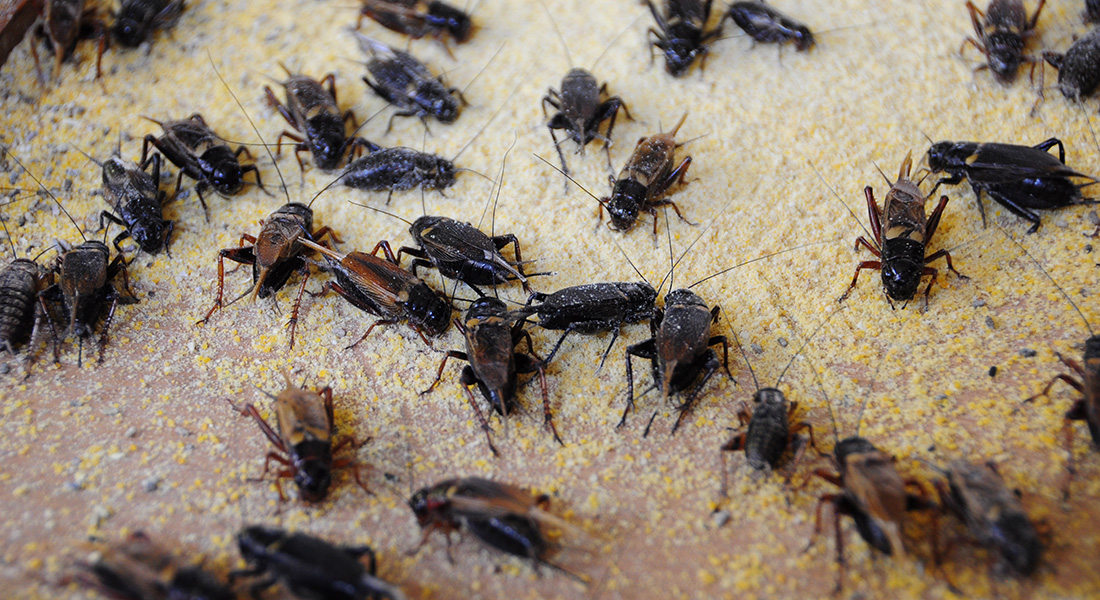Goal 2: Zero Hunger

|
According to the UN, Goal 2 aims to end hunger and all forms of malnutrition by 2030. It also commits to universal access to safe, nutritious and sufficient food at all times of the year. This will require sustainable food production systems and resilient crops together with good agricultural practices, equal access to land, technology and markets. Therefore, international cooperation on investments in infrastructure, on human resources capacity building, and technology are important to boost agricultural productivity. Examples on research from UCPH addressing goal 2: |
|
Unleashing the potential of quinoa to improve nutrition and secure livelihoods in Bolivia |
|
|
Bolivian PhD student at University of Copenhagen, Carla Colque-Little, researches resistance toward diseases in quinoa plants. This is important, not only for the Bolivian economy, but also for the recovery of the Bolivian identity after years of colonialization. There are more nutrients in 100 grams of quinoa than in most foods. It contains proteins, a very well balanced amino acid content, nutraceutical and flavonoids. It is even being tested on space stations as one of the foods chosen for astronauts. Quinoa has deep roots in Bolivia, both historically and culturally, and increased consumption will reduce inequalities and hopefully aid in the fight against obesity and malnutrition. The crop is highly resilient to draught, salinity and frost. It is therefore a crop that has great potential for marginal lands and a model crop for studies of climate stress. Listen to the podcast featuring Carla Colque-Little:
|
|
Research to treat acute malnutrition |
|
|
Researchers from University of Copenhagen and humanitarian organizations have conducted a large study in Burkina Faso in West Africa treating more than 1600 children with acute malnutrition. The study, published in the medical journal PLOS Medicine, showed that corn-soy porridge should be replaced with a lipid-based nutrient supplement (LNS), a fortified peanut butter. The results of the study can be used directly in both the treatment and prevention of acute malnutrition. |
Read more about the results of the Treatfood Project. Primary Sustainable Development Goals: 2 This text was redirected from UCPH NEXS's article on the project by The Secretariat for Development Cooperation at SCIENCE. |
Fermentation creates sustainable growth in the West African food sector |
|
|
In West Africa, spontaneously fermented foods are deeply embedded in the food culture and the population has a great deal of knowledge about how these foods should be produced. This knowledge has been handed down over generations, but has also been challenged due to the import of ready-made food. The Department of Food Science at the University of Copenhagen is leading the Danida project GreenGrowth, which has the aim to isolate and catalogue the microbial cultures used for the fermentations and build biobanks to safeguard this microbiological heritage so it can be used to upgrade the West African food sector. Activities in the project: |
Woman working with fermentation of beer in Burkina Faso. Read more about GreenGrowth on the project website. Primary Sustainable Development Goals: 2, 4 and 8 This text is redirected from UCPH FOOD's article on GreenGrowth by The Secretariat for Development Cooperation at SCIENCE. |
GREEiNSECT |
|
|
GREEiNSECT is a research consortium working on insects for food and feed in Kenya, supporting capacity building and producing scientific evidence through PhD studies in the fields of insect production, food product development, environmental and livelihood assessments. Effect on hunger, according to GREEiNSECT's handout on Insectproduction and SDGs:
|
Watch the TEDx-video on GREEiNSECT. Primary Sustainable Development Goals: 2, 5, 17 This text is redirected by The Secretariat for Development Cooperation at SCIENCE from Department of Nutrition Exercise and Sports |
Rights and Resilience in Kenya (RARE) |
|
|
The development objective of the RARE project is to ensure secure and peaceful access to land for climate change adaptation and thereby the resilience of all Kenyan citizens. The project aims to produce and disseminate insights and increase capacities that can help policy makers and practitioners in their attempts to (1) improve land use policies and land use planning, (2) prevent conflicting land claims from erupting into violence, (3) manage land rights in support of pastoralists and other land users’ adaptation and (4) identify and apply innovative approaches to land rights for adaptation. |
Read more about RARE on the project website. Watch Danida's video-explainer about the project. Primary Sustainable Development Goals: 1, 2, 4, 13, and 17 This text is redirected by The Secretariat for Development Cooperation at SCIENCE from Department of Food and Ressource Economics. |
Researchers help Africa create export of camel milk |
|
|
A group of researchers from DTU and University of Copenhagen collaborate with researcher from Haramaya University in Ethiopia to create basis for manufacturing dairy products based on camel milk. They project may have great influence on jobs and growth in the region because Sudan, Kenya and Somalia are rich in numbers of camels. The researchers investigate which requirements are necessary to develop products and establish the needed capacity on Haramaya University so the university becomes able to support infrastructure and development of new dairy products. |
Read a full describtion of the Haramaya Camel Dairy project. Primary Sustainable Development Goals: 1, 2, 4, 8, 9, and 17 This text is redirected by The Secretariat for Development Cooperation at SCIENCE from Department of Food Science. |

 Credit: Afton Halloran
Credit: Afton Halloran